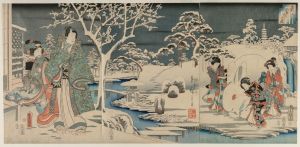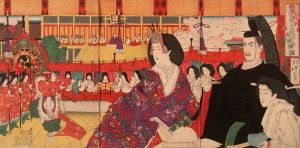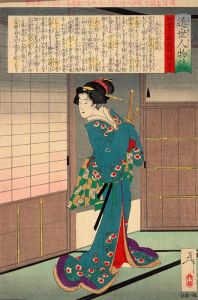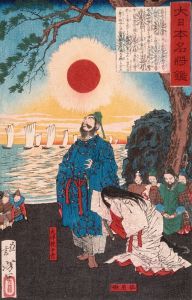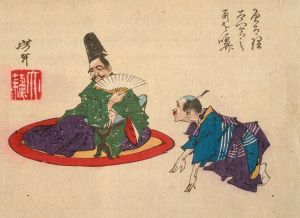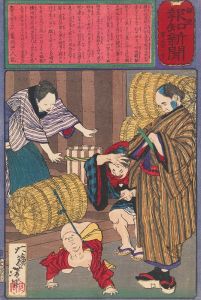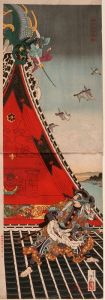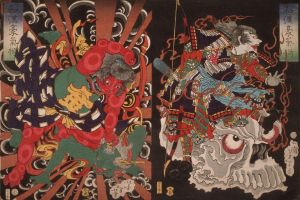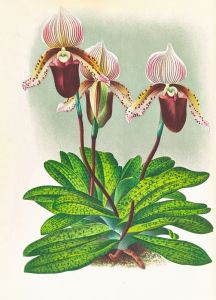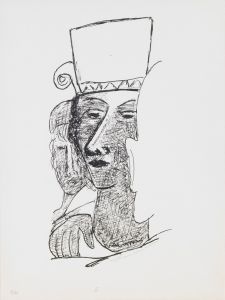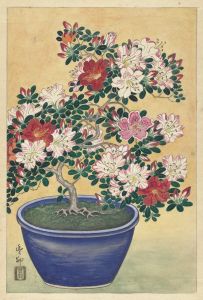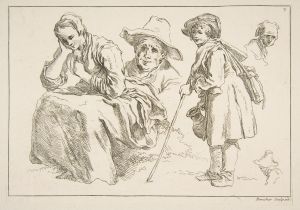
Taira no Tadamori and the Oil Thief
A hand-painted replica of Tsukioka Yoshitoshi’s masterpiece Taira no Tadamori and the Oil Thief, meticulously crafted by professional artists to capture the true essence of the original. Each piece is created with museum-quality canvas and rare mineral pigments, carefully painted by experienced artists with delicate brushstrokes and rich, layered colors to perfectly recreate the texture of the original artwork. Unlike machine-printed reproductions, this hand-painted version brings the painting to life, infused with the artist’s emotions and skill in every stroke. Whether for personal collection or home decoration, it instantly elevates the artistic atmosphere of any space.
Tsukioka Yoshitoshi, a renowned Japanese ukiyo-e artist of the late Edo and early Meiji periods, created the artwork "Taira no Tadamori and the Oil Thief" as part of his series depicting historical and legendary figures. Yoshitoshi is celebrated for his innovative approach to traditional woodblock printing, often infusing his works with dramatic intensity and vivid detail.
The artwork "Taira no Tadamori and the Oil Thief" illustrates a famous episode from the life of Taira no Tadamori, a prominent samurai of the late Heian period. Tadamori was a member of the powerful Taira clan, which played a significant role in Japanese politics and military affairs during the 12th century. He is best known as the father of Taira no Kiyomori, who would later become one of the most influential figures in Japanese history.
The story depicted in Yoshitoshi's artwork is based on a well-known legend involving Tadamori. According to the tale, there was a mysterious figure who was stealing oil from the lanterns at the Gion Shrine in Kyoto. The theft of oil was a significant issue, as it was used to keep the shrine illuminated at night. The local authorities were unable to catch the thief, and the situation became a matter of concern for the community.
Taira no Tadamori was tasked with solving the mystery of the oil thief. Demonstrating his bravery and resourcefulness, Tadamori decided to investigate the matter personally. One night, he lay in wait near the shrine, determined to catch the culprit. As the story goes, Tadamori eventually encountered the thief, who appeared to be a monstrous creature. However, upon closer inspection, Tadamori realized that the "monster" was, in fact, a human disguised with a straw raincoat and hat to appear more fearsome in the dim light.
Yoshitoshi's depiction captures the moment of confrontation between Tadamori and the disguised thief. The artwork showcases Yoshitoshi's skill in rendering dynamic compositions and expressive characters. Tadamori is often portrayed with a calm yet determined expression, reflecting his courage and quick thinking. The thief, on the other hand, is depicted in a state of surprise and vulnerability, highlighting the dramatic tension of the scene.
This artwork is an excellent example of Yoshitoshi's ability to blend historical narrative with artistic creativity. His works often explore themes of heroism, morality, and the supernatural, making them not only visually striking but also rich in cultural significance. "Taira no Tadamori and the Oil Thief" remains a testament to Yoshitoshi's mastery of the ukiyo-e tradition and his contribution to the preservation and reinterpretation of Japanese folklore and history through art.





